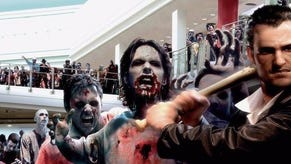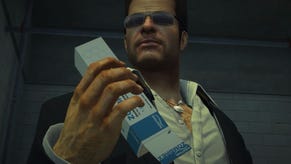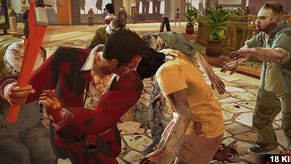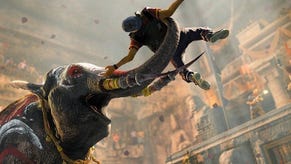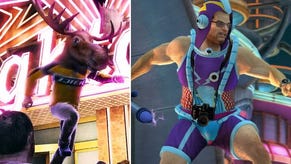Dead Rising 2
Fortune flavours the grave.
Of all the Japanese studios gunning for global acceptance (and at this point it basically is all of them), Capcom is taking the greatest strides. Bionic Commando, Dark Void and Spyborgs have all been produced by Western studios, and Dead Rising 2 is the latest to follow suit, designed by Canadian developer Blue Castle Games. Combined with more widespread use of Capcom's feted MT Framework multi-platform engine technology, it makes for a global strategy in every sense.
You worry though, listening to Capcom R&D chief Keiji Inafune talk about the game, that the publisher is in danger of missing a vital point. "I was actually shocked to hear that a lot of the Western press, as well as Western gamers, were saying that it looks like a Western game on the outside, but on the inside it still feels very Japanese," Inafune says of the first Dead Rising, speaking through translator Ben Judd. "With Dead Rising 2, one of the internal goals that we had for ourselves was to truly make a Western game, to make it down to the core what a Western game is."
This is all well and good, but it's worth considering the context of Inafune's original 'shock': when Western gamers - ourselves included - first took to Dead Rising, Capcom's Japanese-developed Xbox 360 action-adventure, it wasn't just the single-location dynamic, 72-hour time window and non-linear mission structure, nor the brilliant comic violence of the kill counter, and hacking up hundreds of on-screen zombies with props looted from shops in the Willamette Mall, that gave it traction. It was something quintessentially Japanese in the mechanics - the photography hook, the secret bonuses, the caricatured badguys and their indulgent cut sequences. Surely going west risks the loss of so much of what gave the game its unusual flavour?
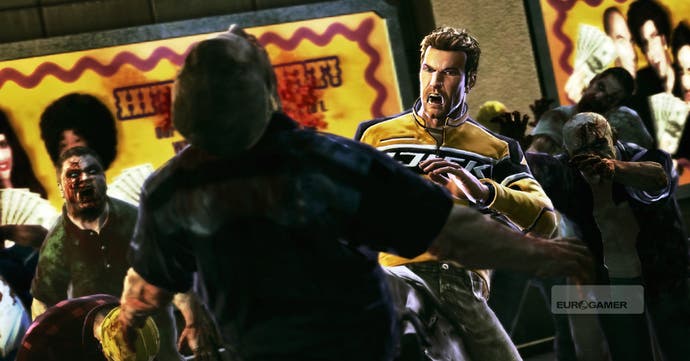
Fortunately, if he wasn't conscious of it at the time, Inafune insists that his original meetings with Blue Castle boss Dan Brady corrected that. "Dan was talking to us and brought about a very good point: one of the best things about Dead Rising 1 wasn't the fact that it's Western, it's the fact that it seems Western but also has that certain Japanese spice," he says. "We realised this was the kind of company that would be able to make the compromises and work with us to make the perfect blend between East and West that would be necessary for Dead Rising 2."
To this end, Blue Castle began by refining the technology to vastly exceed the impressive 500-zombies-at-once baseline set by the first game. As new protagonist Chuck Greene - a former motocross champion on a mission - slices his way through waves of shambling undead on the Las Vegas-style strip at the heart of the game's new setting, Fortune City, Brady hits a few buttons and fills out the screen. At first with 1,000 zombies - twice what Dead Rising could do, and nowhere near enough to trouble the game engine - and then with 2,000, and eventually 7,000. The frame-rate dips to compensate, but not to unplayable levels. In fact, the greatest threat to the player, as he charges down the strip on a motorbike carving up the crowd, is that the volume of bodies and blood splatter striking the camera and flying across it makes it difficult to see where you're going. You're actually blinded by the carnage.
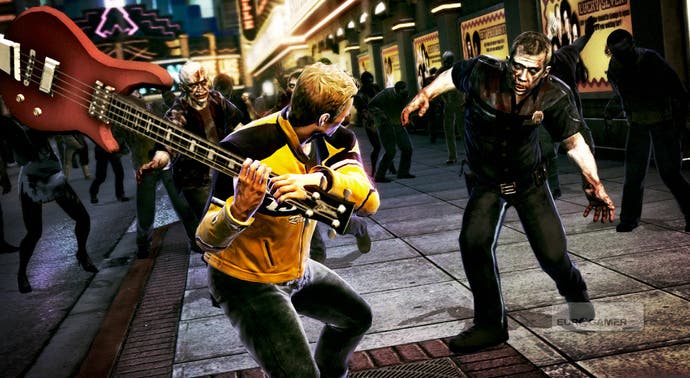
Mechanically the combat - well, the one-way flood of slaughter - looks similar to Dead Rising 1, with a button-mashing three-stage horizontal melee attack, concluding in an uppercut, and an over-the-head downward smash as the two principle means to batter zombies with objects strewn and hidden around the game world.
Chuck's movements are also similar to those of Frank West, and at first his arsenal looks like the familiar collection of blunt and bladed props that gave the Willamette Mall its raison d'etre. There are baseball bats, guitars, bar stools, and roulette wheels grabbed from the tables of a small casino off the strip. Costumes return too. Like Frank, Chuck is not averse to the odd wardrobe change, but at least this time he does it with offensive intent, donning a moose head, which can be used to mow through zombies, or tusk them into the air. Other improvements include projectile weapons, like an assault rifle - not the game's core focus, Brady insists, but evidently well-implemented, with a tight, Gears of War-style over-the-shoulder fully automatic firing mode and the welcome addition of strafing.


